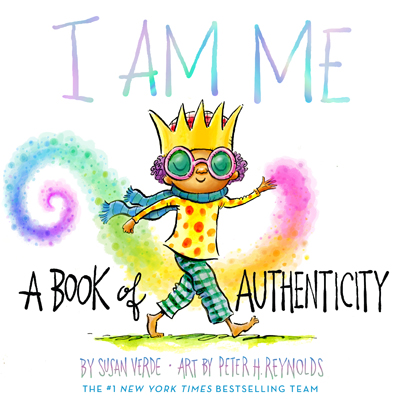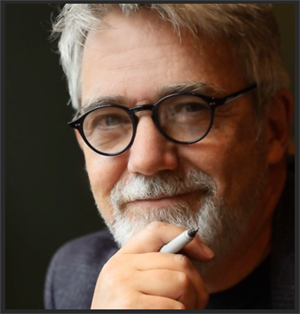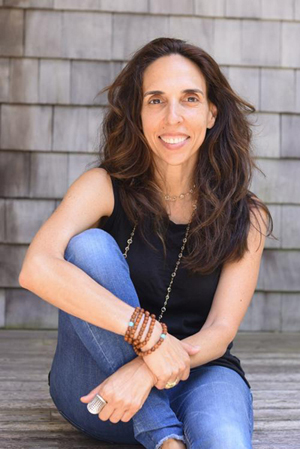Children Embrace Their Authenticity in I AM ME
The #1 New York Times bestselling team of Susan Verde (author) and Peter H. Reynolds (illustrator) continue their I AM series for readers aged 4-8.

Susan Verde and Peter H. Reynolds Help Kids Celebrate Individuality with Joy
The #1 New York Times bestselling team of Susan Verde (author) and Peter H. Reynolds (illustrator) continue their I AM series for readers aged 4-8. I AM ME shows readers how to love themselves and respect other people for who they are. After teaching elementary school, Verde became an author while teaching yoga and mindfulness. Peter H. Reynolds, an acclaimed storyteller and illustrator, is known worldwide for The Dot. Verde (SV) and Reynolds (PHR) shared their thoughts with School Library Journal.
 |
What concerns you most about what children face today?
SV: When I was a teacher, I had students who had experienced trauma, but it seems to have reached a different level these days. I worry that their nervous systems are always ramped up. I worry about their mental health. Books have always been important in helping kids cope and find themselves. I am thankful that SEL has become so important, and teachers and librarians are doing such good work in the face of it all.
How can a teacher implement the mindfulness practices in the I AM series?
SV: The practices in the back are meant to be used not just to support the messages of each book but also as stand-alone activities to bring some mindfulness and self-awareness and care into their classrooms. I have seen educators and librarians use the exercises to create space for kids to speak to themselves with kindness and give them tools to manage their big emotions.
What has been the most memorable reader response to the I AM series?
 PHR: I got a letter from someone in their seventies saying they had read the I AM series and it inspired them. They lamented they had never heard these messages while growing up—and had suffered because they never learned how to deal with stress and, more importantly, never learned that it was okay to be just the way they were.
PHR: I got a letter from someone in their seventies saying they had read the I AM series and it inspired them. They lamented they had never heard these messages while growing up—and had suffered because they never learned how to deal with stress and, more importantly, never learned that it was okay to be just the way they were.
How did growing up in Greenwich Village influence this book?
SV: I was so fortunate to grow up in a neighborhood filled with creative people as well as a mix of cultures and races and gender identities. Difference was the norm and no one seemed “othered.” As I began to teach and interact with kids more, it felt important to share these messages of loving who we are, being authentic and knowing we matter instead of hiding our true selves.
What do you like most about working with Susan Verde?
PHR: I am an advocate for creative approaches to support Social Emotional Learning. Susan has an amazing heart and wonderful instincts on how to nurture children. Her words are simple, and powerful. When she sees my art, she is so effusive and excited, which is fuel for me to keep going and give her story all I’ve got.
In one illustration, the featured character performs on “ME TV.” Is that like TikTok?
PHR: Social media IS indeed a way to broadcast who we are, and perhaps who we are becoming. It gives kids practice in engaging in “self-design,” which is fluid and dynamic. Even without social media, we “broadcast” out who we are daily—with what we wear, what we say, and how we talk with those around us. We all need to “broadcast bravely” and be proud of the “me” we put on stage for the world to see.
Is there a line between living authentically and curating one’s self for social media?
 SV: Absolutely! Living authentically means being your whole self. Good, bad and otherwise. Anyone looking at social media has to remember that this is not the whole picture of a human. To be fully authentic on social media would be to share the downsides or the “perfectly imperfect” sides of oneself as well, which can require some bravery.
SV: Absolutely! Living authentically means being your whole self. Good, bad and otherwise. Anyone looking at social media has to remember that this is not the whole picture of a human. To be fully authentic on social media would be to share the downsides or the “perfectly imperfect” sides of oneself as well, which can require some bravery.
What is your favorite memory from teaching yoga to children?
SV: I had a child in one of my classes who was very resistant to participating. This child would just sit on the sidelines and watch or not. One day after school, her mother came to me and said, “I was in the store with my daughter and we were rushing. I turned and saw her by the frozen food with one hand on her heart and one on her belly with her eyes closed. She said, ‘Miss Susan said anytime I feel like everything is too much, I can stop wherever I am and breathe. It’s helping.’” That was the best!!
Do you think your mindfulness message is catching on?
SV: I think the mindfulness message is more than catching on. The message is a big component of Social Emotional Learning and I see beautiful examples of it all the time. I must again, express my awe and gratitude for the teachers and librarians out there doing the work.
SPONSORED BY
 |
RELATED
The job outlook in 2030: Librarians will be in demand
The job outlook in 2030: Librarians will be in demand
ALREADY A SUBSCRIBER? LOG IN
We are currently offering this content for free. Sign up now to activate your personal profile, where you can save articles for future viewing





Add Comment :-
Be the first reader to comment.
Comment Policy:
Comment should not be empty !!!